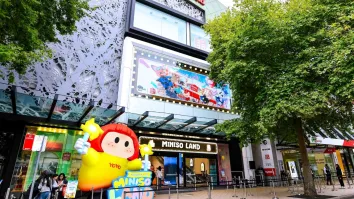
Consumers’ growing disloyalty to brands requires stronger omnichannel strategies
Retailers need to be present everywhere as a new breed of ‘zero consumers’ prefers to explore, says analyst.
CONSUMERS are growing disloyal to brands and stores as they are interested in exploring their options. The only way retailers can capture them is by strengthening the omnichannel presence, Matthieu Francois, Partner, McKinsey & Company said.
Francois said customers today could be defined as “zero consumers.” This means that consumers have no boundaries as they willingly shop across channels, either online or offline. The mainstream is now also “disappearing.”
Due to this, consumers are no longer loyal to any store or brand as they try to experiment with their new consumer behaviour.
“The implication of that is that increasingly, retailers try to capture this consumer in more places,” Francois said at the Retail Asia Forum in Ho Chi Minh.
“It means that as a consequence of that, a lot of us are trying to develop omnichannel retail. So you’re trying to get the consumer online, offline, or in between, and to serve them.”
In Southeast Asia, 91% of the consumers have changed their shopping habits due to the pandemic and 87% of them plan to continue with this behaviour, Francois said, adding that Vietnamese consumers.
Omnichannel strategies
Retailers in the region “have gone quite far” in the omnichannel journey, Francois said, adding that grocery delivery and click-and-collect are being implemented.
Typically, retailers would start by entering a marketplace to sell items that are not in the assortment. Now retailers are also selling “virtual things” such as travel, financial services, and medical services.
“We even see retailers that go beyond and that can have a logistics business and ad service business,” Francois said.
For example, US-based Walmart is no longer just a retailer. The company has diversified its business and is engaged in health services, trucking, and even publishing.
Whilst omnichannel is “very sexy” for consumers, this is not the case for retailers because they also have to consider in the equation the delivery of the products and the amount they have to spend for warehouses.
Retailers are becoming “retail media” as they turn their apps not only as a platform to manage transactions but also into a space to sell advertising space once they have a lot of consumers.
“Most of the retailers that have started on this journey have evolved further to be more targeted and therefore monetise better the ad space that they sell,” Francois said.
Walmart, for example, generates over 5% of its revenue from selling advertising.
Francois added that brands need to re-think their purpose and implement personalisation at scale enabled by loyalty.
Leveraging AI
Here lies the usefulness of artificial intelligence (AI) in these times for retailers, especially in terms of promotional planning. AI can be used to predict the impact of a promotion.
This emerging new technology can also be used in price forecasting. AI can assist retailers in automating some pricing decisions.
It can also be beneficial in terms of managing assortment. Francois told Retail Asia that there are now modes that can measure or monitor the status of stock-keeping units in each store and help retailers gain insight into what happens when they pull items out.
“When you run this at scale, you can become smarter about how you use the space on your shelves,” he said.
However, one problem retailers are facing is acquiring talent that will help make all these new technologies work.
“There’s been a bit of a shift in the labour market, where it tends to be now harder to fill all positions. It’s hard to keep people in retail jobs and to retain them,” he said.
Francois advised retailers to be deliberate about their talent strategy to ensure that they hire the right people.

















 Advertise
Advertise






